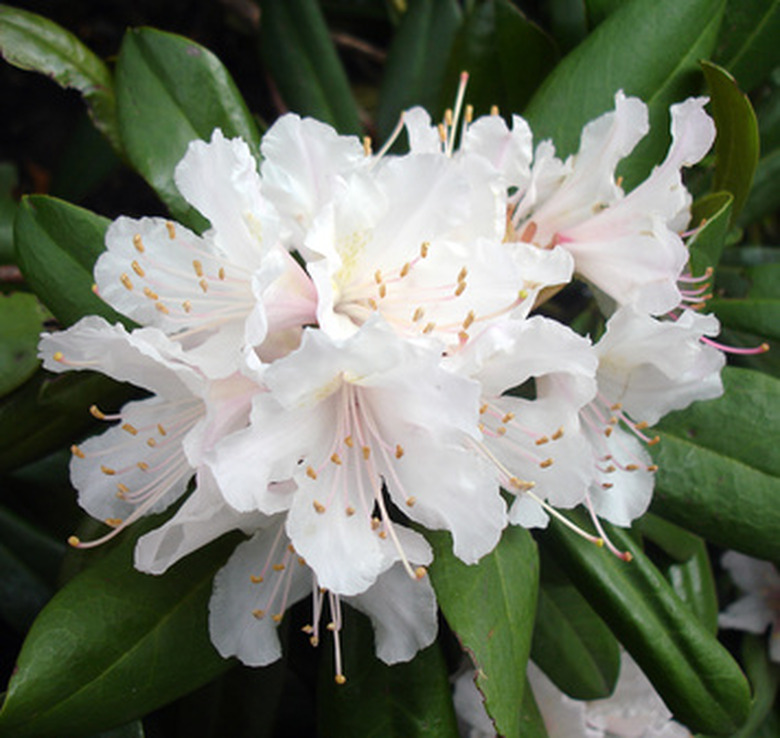My Oleander Is Not Blooming
Oleander, or Nerium oleander, is an evergreen shrub that has leathery, blade-shaped leaves and profuse small flowers in clusters in white, pink and yellow. It prefers a dry, mild climate with plenty of sunshine. It grows quickly to make effective privacy hedges or screens. Generally, oleander requires little maintenance, so if your oleander is not blooming, double your efforts to provide the plant's basic needs.
Planting Oleander
Though oleander can adapt to a variety of soils, it is best to plant them in full sun. According to the International Oleander Society, lack of sufficient sunshine can affect the plant's ability to bloom. Plant the oleander only as deep as it was in the container. You can split the root-ball halfway from the bottom to the top of the ball to encourage root spreading. The plant will benefit from added organic matter like compost, manure or peat moss. Water the plant thoroughly after planting. Do not prune after planting.
- Oleander, or Nerium oleander, is an evergreen shrub that has leathery, blade-shaped leaves and profuse small flowers in clusters in white, pink and yellow.
- According to the International Oleander Society, lack of sufficient sunshine can affect the plant's ability to bloom.
Pruning Oleander
Oleander flowers bloom on new growth, so when pruning leave enough new growth to allow buds to develop. Cut just above the leaf nodes. Prune off small suckers and broken or dead branches. For mature shrubs that will not bloom, cut back to 1/3 to stimulate vigorous growth on the branches.
Heat and Light for Oleander
Oleander blooming depends on how much sunlight is available to it. If your oleander is not blooming, make sure that other vegetation is not blocking the sunlight to plant. Trim trees and other bushes to allow sunlight to the oleander for at least four to six hours each day. Protect oleander from temperatures below 15 to 20 degrees Fahrenheit by bringing them indoors or covering. Temperatures this low will damage blooms and can kill the plant. Healthy oleander plants can tolerate high temperatures and strong sunlight.
- Oleander flowers bloom on new growth, so when pruning leave enough new growth to allow buds to develop.
- For mature shrubs that will not bloom, cut back to 1/3 to stimulate vigorous growth on the branches.
Water Requirements for Oleander
Oleander is drought-tolerant when well-established. Provide additional watering for younger plants which may bloom poorly or not at all if conditions are very dry. Allow water to soak in deeply. Oleanders have high water needs during blooming time, which is from early summer to autumn.
Fertilizing Oleander
Oleander generally does not require additional fertilizer, but some soil types may not have enough nutrients to support flowering. The "Houston Chronicle" recommends fertilizing oleander in the spring and in the fall with a balanced fertilizer. Additional potassium can be added to aid flowering. Signs that the oleander needs additional fertilizer include small leaf growth, short distance between nodes, no terminal growth on stems and poor blooming.
- Oleander is drought-tolerant when well-established.
- Provide additional watering for younger plants which may bloom poorly or not at all if conditions are very dry.
